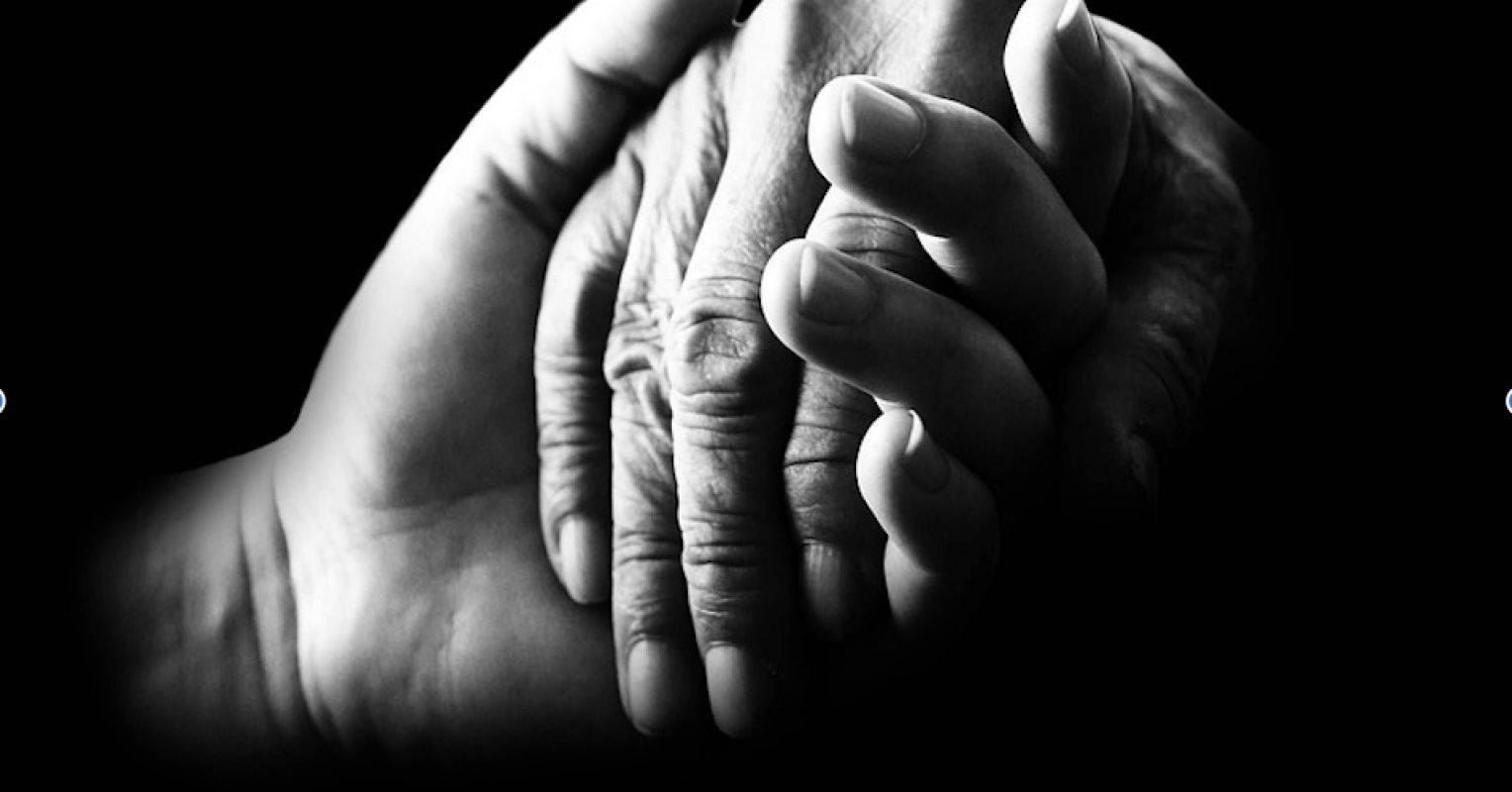#burnout
#burnout
[ follow ]
fromFast Company
2 days agoThese are the risks and downsides of being a go-to person
We get it. Being the go-to person feels good. It gives you a sense of purpose and contribution. But saying "yes" at all costs, even when you're overloaded, has a real impact on your professional performance, and on you personally. The unintended consequences of being everyone's go-to person can result in workload imbalances, unspoken resentment towards your team, and even quiet cracking, which are precursors to burnout.
Mental health
fromPsychology Today
5 days ago6 Essential Skills for "Slow Time" Leadership
Their follow-up response usually depicts an organizational culture characterized by back-to-back, early-morning-to-early-evening meetings. Contrary to the more humane values listed on their organizational websites, the lived culture glorifies being busy as a badge of courage, strength, commitment, and competence. In reality, "busy time" leadership is reactionary, fragmented, transactional, and disrespectful. Ultimately, this approach negatively impacts leaders' ability to acquire critical information for effective decision making, foster a psychologically safe organizational culture, strengthen talent retention, and reduce burnout and quiet quitting.
Business
fromFast Company
1 week agoAn AI strategist explains why she stopped setting New Year's goals
Every January, leaders are told to do the same thing: set ambitious goals, map out the year, and commit to executing harder than before. We frame this as discipline or vision, but more often than not, it is a ritual of pressure. The assumption is that success comes from wanting more and pushing faster.
Mental health
fromenglish.elpais.com
1 week agoGary Stevenson: The left has a problem when it comes to how it perceives young men'
Then, a veteran Japanese co-worker came up and told him that he didn't understand the true nature of karaoke. He told me, It doesn't matter if you sing well or sing badly. What matters is that your guests have a good time, remembers Stevenson on the terrace of Yurt Cafe, a feet feet from the home he bought in Limehouse very close to where he was born, with a view of the Citigroup tower
Left-wing politics
fromFast Company
1 week ago6 ways to sneak 'micro-creativity' into your workday in the new year
Research from Johns Hopkins University's International Arts + Mind Lab, detailed in the 2023 bestseller Your Brain on Art by Susan Magsamen and Ivy Ross, shows that engaging in art reduces the stress hormone cortisol, no matter your skill level, with some benefits appearing in as little as 20 minutes. A 2025 study of nearly 2,500 people across five countries found that creativity can be reliably predicted by how often the brain switches between its default mode network (active during mind-wandering)
Arts
fromwww.bbc.com
1 week agoHow art therapy could cut staff burnout risk
"While they're very good at solving problems in a rational way, they can be less well practised at processing feelings. And due to the nature of their jobs, there are a lot of intense and difficult situations they'll be dealing with every day. Using the art therapy method helps people to communicate with colleagues in a very different way and to share feelings that might otherwise be difficult to express."
Mental health
fromBusiness Insider
2 weeks agoBurned out in her 50s, she left corporate life. Starting over in Korea helped her heal.
Jane Newman spent her evenings watching K-dramas on her recliner during the pandemic lockdowns. She didn't expect they'd spark a curiosity about South Korea that would eventually lead her to move there and start over.
Wellness
fromBusiness Insider
2 weeks agoI quit my job at 29 and traveled solo. I didn't tell my parents until I'd finished my business plan.
In February 2023, at 29, I quit. I wanted to head into my 30s with a clearer sense of purpose. I didn't tell my parents, but my friends and colleagues were supportive. Suddenly, I had nothing to do, and that early idleness felt panic-inducing. I was so used to running around, talking to people, and being needed. I felt completely lost for a few days.
Wellness
Mental health
fromhttps://scoop.upworthy.com
2 weeks agoBoss bragged after posting an image of his team working late on a Monday - the backlash was swift
Publicly celebrating employee late-night overtime provokes backlash as massive unpaid overtime and rising trends reveal burnout and toxic workplace practices.
fromPsychology Today
2 weeks agoWhat Winter Can Teach Us About Burnout and Self-Care
There is great irony in the fact that we tend to associate the winter holiday season with busyness, stress, and overwhelm. While we are rushing and doing, the natural world around us is in a completely oppositional state-resting, slowing down, cooling, hibernating, restoring itself.
Mental health
fromHuffPost
2 weeks agoThere's 1 Universal Truth About Attending Weddings - And I'm Finally Willing To Say It
I invited a small group of close friends, ordered a round and let the night unfold without expectations. No theme, no outfit planning and definitely no after-party. This was not my usual approach. I typically mark birthdays with intention and spectacle, but this year I wanted quiet. I wanted something that didn't require logistics, spreadsheets or a credit card statement I'd be afraid to open.
Travel
fromFast Company
2 weeks agoForget job hunting. Gen Z is 'growth hunting'
When I talk with business leaders about Gen Z, the same frustration often bubbles up: "They won't stay." It's said with a kind of bewildered shrug, as if the younger generation has suddenly rewritten the rules out of thin air. I heard it again last week during a radio segment I did about generational dynamics at work. The host asked why Gen Z feels so comfortable moving on so quickly.
Business
Parenting
fromBusiness Insider
2 weeks agoThey left their jobs in their 50s to reconnect with their kids. It helped them rethink their long-term career plans.
Midlife professionals left demanding corporate careers to take a planned family gap year, addressing burnout and prioritizing family time while securing finances by renting home.
fromBusiness Insider
3 weeks agoYou can't outrun burnout
Here are some other tips: It's OK to be selfish: When Kristi Coulter reached her breaking point as an Amazon executive, she made a new rule: only accept opportunities at work that offered a clear benefit to her, or were important to her boss. Did the world come crashing down as she turned stuff down? No. In fact, Coulter found she was more engaged and effective at the things she said yes to.
Mental health
Mental health
fromBusiness Insider
3 weeks agoI burned out juggling a tech leadership role and caring for my autistic brothers. Here's how I found myself again.
Kirsten Hurley left tech sales due to severe burnout worsened by caregiving responsibilities and rebuilt a healthier, more sustainable career.
fromBusiness Insider
3 weeks agoBurnout led me to build Bala - and caught up with me again as we grew. Here's how I manage now.
The first time I recognized I was experiencing burnout, my husband and I left our advertising jobs and traveled without any set plans. This trip got me out of the nonstop grind mindset I'd functioned in for too long. I came back to corporate work refreshed and inspired in October 2016. Our company, Bala, was supposed to be a side hustle, creating cute wrist and ankle weights inspired by our travels.
Mental health
fromFast Company
3 weeks agoBoredom is the new burnout, and it's quietly killing motivation at work
To the untrained eye, exhaustion and disengagement can look identical. Boredom is typically a form of cognitive under-stimulation, while burnout is emotional and physical overextension. Both can leave people feeling unmotivated and fatigued. But here's the twist: in cultures that tend to glamorize busyness, many employees feel safer saying they're burned out than bored. Burnout signals you worked "too hard." Bored, on the other hand, signals the opposite.
Mental health
Mental health
fromBusiness Insider
4 weeks agoI run a $130,000-a-week burnout clinic for CEOs - and burned out myself
Jan Gerber, founder of Paracelsus Recovery, experienced acute depression and burnout, entered inpatient treatment in Zurich, and runs a private clinic serving wealthy, discreet clients.
Health
fromBusiness Insider
1 month agoI burned out from 2 years of job hunting, so I changed everything about how I apply. I won't let the job market break my spirit anymore.
Excessive daily job hunting and loss of work-life structure led Kirsten Bradford to severe burnout, prompting lifestyle and job-search discipline changes that aided her recovery.
fromBusiness Insider
1 month agoWomen at the top are exhausted and burned out, according to a McKinsey and Lean In report
Women are hitting the top of the corporate ladder only to find something waiting for them: exhaustion. According to a report published Tuesday by McKinsey and LeanIn.org, a nonprofit founded by Sheryl Sandberg, burnout among senior-level women is the highest it has been in the past five years. Around 60% of these women said they have frequently felt burned out at work in the past few months, compared with 50% of senior-level men, per numbers from the "Women in the Workplace" 2025 study.
Women
fromBusiness Insider
1 month agoI was an ambitious Amazon exec who thought burnout was for the weak. Then I had to solve my own.
I was 38, and the role - which oversaw standards, best practices, and technology for Amazon's 200+ site merchandisers - was the biggest of my life by far, one I'd been thrust into just three months after my arrival in Seattle and at Amazon. I was thrilled (and a bit terrified) by the size of the opportunity, and threw myself into it.
Mental health
fromYanko Design - Modern Industrial Design News
1 month agoPantone's 2026 Color of the Year Finally Admits We're All Exhausted - Yanko Design
Pantone has officially called it: the prevailing mood for 2026 is exhaustion. This marks a sharp departure from recent years, when the annual announcement felt like a conversation happening in a different room. The world was navigating a pandemic hangover and digital burnout, while Pantone was prescribing electric purples for creativity and defiant magentas for bravery. Each choice, while commercially friendly, felt like a wellness influencer telling a tired person to simply manifest more energy.
Design
fromForbes
1 month agoWhy The 'Career Minimalism' Trend Is Spreading Beyond Gen Z
According to a recent Glassdoor survey of more than 1,000 U.S. professionals, 68% of Gen Z respondents said they would not pursue management if it were not for the paycheck or the title. It may seem like younger workers lack ambition, but the reality is different. Gen Z is redefining professional success through career minimalism, choosing to treat their jobs as a source of stability while channeling ambition and creativity into pursuits outside traditional employment.
Careers
Mental health
fromBusiness Insider
1 month agoI broke out in hives after severely burning out at my job - so I quit. I'm not willing to die for an early retirement.
Severe work-related stress caused chronic hives and systemic health decline, which resolved after quitting, prioritizing health, shifting careers, and adopting intentional living.
fromPsychology Today
1 month agoThe Impossible Race: When Machines Make Us Feel Behind
Not long ago, I sat at my desk staring at the little red dots scattered across my screen - notifications, unread messages, unfinished tasks, a dozen digital nudges demanding attention. I felt that familiar tightening in my chest, the quiet whisper: You're behind again. Behind who? Behind what? I hadn't stopped working; in fact, I'd been working most of the weekend. Yet somehow my computer, my email, and the constellation of apps around me had already sprinted several steps ahead.
Digital life
fromBusiness Insider
1 month agoI left Google after 18 years and have no regrets. Here are my 3 tips to quit your job successfully.
I started there in November 2006, when there were only around 10,000 employees, and became an executive - the director of American media relations - in 2022. Google's amazing; I bleed Google colors. I loved the impact I was having, the future of opportunities I saw for myself, and the feedback I was getting as a leader. I'm also the breadwinner for my family.
Startup companies
fromComputerWeekly.com
1 month agoProtecting the defenders: Addressing cyber's burnout crisis | Computer Weekly
Nobody embarks on a career in cyber security expecting an easy ride. It's widely recognised that protecting critical digital infrastructure is high-pressure and high-stakes work. For many of us, that's part of the buzz. Every day, we tackle complex challenges, address high-stakes problems, and (hopefully) make a real difference - but who will protect cyber professionals from the risk of burnout?
Information security
fromPsychology Today
1 month agoAlarm Fatigue and Health Care Workers' Mental Health
Hospitals are always buzzing with overlapping sounds-the beeping of the heart monitor, the sharp alert of an IV pump finishing, and the low hum of the ventilation. This creates a dissonant symphony of alerts, which can be a source of overwhelming sensory input for staff working eight or more hours daily. This can have a profound, often hidden toll of alarm fatigue on the mental health of health care staff.
Mental health
fromPsychology Today
1 month agoWhy My Mama Doesn't Eat at Thanksgiving
But you know what memory I don't have? My mother eating. She cooked. She served. She made sure everyone had seconds and thirds. She cleaned. She packed plates for folks to take home to their loved ones. She stood in that kitchen for hours (sometimes, days), making magic happen for anyone that she could. But I cannot recall a single moment when she sat down with a full plate of her own, enjoying the meal she had poured herself into.
Mental health
fromwww.theguardian.com
1 month agoTwo-thirds of nurses in UK work while unwell, says union
A survey by the Royal College of Nursing (RCN) of more than 20,000 nursing staff found that 66% had worked when they should have been on sick leave, up from 49% in 2017. Just under two-thirds (65%) of respondents cited stress to be the biggest cause of illness, up from 50% in 2017. Seven out of 10 said they had worked in excess of their contracted hours at least once a week, with about half (52%) doing so unpaid.
Health
fromPsychology Today
1 month agoWhen Striving to Impress Stops You From Moving
My father's voice still rings in my mind: "Don't do a half-ass job." He meant to teach discipline and integrity, and I took it to heart. But somewhere along the way, that lesson evolved into a rule: If I wasn't giving everything, I wasn't enough. If I slowed down, I feared slipping. And so I kept accelerating, one foot pressed firmly on the gas, unsure how to ease off.
Mindfulness
Mental health
fromFast Company
1 month agoCreators are suffering from a mental health crisis, new study shows
Many content creators experience high rates of anxiety, depression, burnout, suicidal thoughts, and financial instability, with worsening outcomes over time and limited specialized mental-health support.
Mental health
fromBusiness Insider
1 month agoMy mother's life had space for her to rest. Mine feels like it never stops.
Constant digital notifications and nonstop multitasking fragment attention, erode rest, and accelerate burnout; deliberate boundaries and small adjustments are needed to reclaim time and sanity.
fromPsychology Today
1 month agoWhy Your Brain Needs HEART to Navigate Change
Have you noticed how even well-planned organizational changes can leave teams feeling scattered, resistant, or quietly overwhelmed? Our research with more than 1,000 workplaces has found that 'poor change management' is consistently the most frequent cause of burnout in workplaces right now. The problem isn't a lack of project plans. Organizations have those in abundance. The gap is neurological. Too much focus on timelines and deliverables while overlooking what uncertainty does to people's brains.
Business
fromFast Company
2 months agoAre you trapped in the middle as a middle manager?
I spent several years of my career in the uncomfortable role of middle manager. On one side, I had executives asking me why my team couldn't "do more," and on the other side, my employees told me they were stretched too thin. It was an endless tug-of-war. I was both the enforcer of company expectations and the advocate for my team's needs. At times, my role felt at complete odds with itself. Executives push for efficiency and growth, while employees look for empathy and stability.
Careers
Productivity
fromBusiness Insider
2 months agoAfter years in the corporate world, I changed the way I approached success and started living better
Intentional rituals replace externally driven efficiency and constant pursuing of achievements, refocusing attention on inner wellbeing, meaning, and sustainable productivity.
fromPsychology Today
2 months agoWhy High Achievers Need to Hit Pause Before They Crash
Daniel didn't look like a man falling apart. Pressed shirt. Polished watch. Phone buzzing every few minutes. Yet his hand trembled slightly as he reached for his coffee. "They said it was panic," he said, half whispering. "But it felt like dying." He had just left the ER after his second "heart attack that wasn't." On paper, he was the definition of success: a founder, husband, father. But inside, his mind was spinning at 200 miles per hour.
Mental health
Mental health
fromInside Higher Ed | Higher Education News, Events and Jobs
2 months agoMinor in Holistic Wellness Advances Student Career Wellness
Rutgers' holistic wellness minor trains students in personal well-being, wellness program development, and workplace wellness skills to enhance workforce readiness and community health.
[ Load more ]








